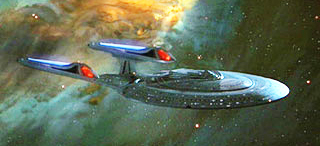“Oh my god … It’s full of stars!”
Dr David Bowman, in ‘2001: A Space Odyssey’ (Arthur C. Clarke)
—————————————————————————————————–
Summary
Many millions of years ago environmental pressures drove our very earliest ‘ancestors’ to break through the surface tension (both physical and metaphorical) of the oceans and set up home on land. It was a seminal moment for life on this planet.
Now, again, we are at just such a moment. Resources are getting scarcer, environmental pressures are reaching extreme levels, tensions both between and within nations are reaching breaking point. A number of public figures have said that there are way too many of us, that the earth’s population needs to be drastically reduced.
There’s only one option that’s in any way thinkable. Evolution doesn’t pull any punches.
At the same time a leading scientist is saying that we shouldn’t be keeping all our eggs in one basket – earth. A major global disaster, man-made or natural, could signal the end of the human race: one strike (e.g. by a rogue asteroid) and we’re out.
|
Eagle Nebula (detail) STSci/NASA/Hubble Heritage Team |
What a time, then, for astronomers to announce that an estimated one in twenty of the stars in our galaxy has a planet orbiting it with gravity and temperature similar to our earth That’s around ten billion earth-like planets. Quite a lot to choose from – hopefully even without stepping on any alien toes (or whatever pass for toes). But there’s a snag. And according to conventional science it’s a ‘forever’ snag – there’s no way of making it go away, ever. But strong (and mounting) scientific evidence says conventional science has misread the tealeaves in respect of one very significant detail. That detail could make a world of difference – or even several worlds, come to that. |
Time to check out those spaceways …
—————————————————————————————————–
Where do we go from here?
Up until a couple of centuries ago those who found living conditions cramped, or uncomfortable in other ways, could get on a boat and head off for pastures new. In almost every direction there were wide open spaces for the hardy and adventurous to find new living-space for themselves (without them actually having to oppress those who already lived there, that was an unnecessary side-effect).
Not any more. Every bit of land on this planet now has ‘No Vacancies’ signs and conditions in far too many places are more reminiscent of an overcrowded rats’ cage than the Garden of Eden. Or, looking at it another way, the world is like a seed-pod about to burst – but with nowhere for the seeds to go.
Or is there?
We now have it on good authority that there are almost certainly billions of planets in our galaxy with gravity and temperature not dissimilar to the one we now live on. Even if only one in a million has a breathable atmosphere, that still gives us thousands to choose from.
But, as always, there’s a catch (quite apart from the power source – we’ll assume that can be dealt with). The able-bodied colonists will, of course, not be those that left earth as adults, they’ll be their offspring a couple of generations down the line. That’s ok – if there’s a workable planet at the other end.
If not, you don’t get a second shot. To start the process again – and again, and again – with leaders more and more generations removed from the mother planet raises a host of problems that don’t bear thinking about.
We can only infer even the existence of planets around other stars by variations we can see in the emissions from those stars. We certainly can’t tell whether those planets – if they exist – will be suitable for colonisation. A high level of wastage may be ok for dandelion seeds or coconuts, but not for ships full of pioneering humans. And even a status message home, at light speed, could take a decade or more. Not ideal for planning further trips.
Warp Factor 5, Mr Sulu …??
So chugging around the galaxy at sub-luminal speeds looking for a new home isn’t really a goer.
|
But according to conventional science neither is the alternative, superluminal (faster-than-light) travel. Not now, not in a hundred years, not in a million years. Not ever. |
Because that could bring the wrath of the gods down on our heads, playing havoc with the universal principle of causality, or cause and effect, and plunging the whole cosmos into chaos.
Relativity theory says that nothing can move faster than the speed of light. In view of recent scientific findings that makes perfect sense. But that same theory says that if we could find some way of getting round that and moving from A to B faster than light can (such as some form of hyper-dimensional travel or wormholes in space) we’d then be able to travel backwards in time.
So we could change the course of history by stopping Archduke Ferdinand or JFK from being shot, or even accidentally kill our own grandmother – so setting up an ‘I exist – no I don’t – yes I do – no I don’t’ paradox that would rattle on forever without ever being resolved.
You can probably think of some far better examples. But the long and short of it is that nothing in the whole of creation could ever be relied upon, not even your own existence, if we started scooting around the galaxy faster than the speed of light – no matter how we achieved it.
Quite a few scientists have written about this, and about the associated idea of ‘closed timelike curves’ (closed loops in time) which are a possibility according to General Relativity. The noted physicist Stephen Hawking published a scientific paper some time ago on his Chronology Protection Conjecture which proposes that something would intervene to prevent such mayhem.
The word ‘conjecture’ gives you an idea of how certain (or not) he is about that. There’s a distinct impression that scientists are holding back a bit with regard to things superluminal, for fear of nudging open this Pandora’s Box.
And of course there’s the question of “How could it be done, anyway?”
An alternative perspective
What if there wasn’t this risk of cosmic chaos? What if there was a ‘wormhole’ through Relativity Theory that explained all of the effects without bringing in a threat of dire consequences from superluminal travel? And what if that same ‘wormhole’ gave some real insights into the nature of space and time that opened up research possibilities for making that superluminal travel a reality? With a changed mindset on the hazards, and the impossibility, of faster-than-light-ness, who knows what might be possible?
Fast rewind now, nearly a century, to the first physics doctoral thesis that won its author a Nobel prize. In that thesis Count Louis de Broglie put forward the idea of matter having wavelike properties. That concept went on to become Quantum Mechanics, the most firmly established scientific model of reality ever. The conventional interpretation of that wavelike quality says it’s just a statistical description – but both de Broglie and Einstein were convinced it was more than that.
Practical experiments and theoretical research are both increasingly giving weight to the idea that particles of matter are formed from photons – light and non-visible higher frequencies. This idea in turn leads naturally to all the tried and tested principles of Special Relativity without the risk of causality being upset by faster-than-light travel, as described here.
It also gives a completely new perspective on the nature of time and space, a perspective offering possibilities that don’t even exist in the conventional model of reality. [As an aside, the Alcubierre drive, as adopted by Star Trek, depends on warping space locally. Nice idea (in the most unlikely event that it’s possible) - but before you could warp space you’d have to know what space is.]
|
|
A slight shift in perspective can turn a vertical stack of cubes (black tops) into a sideways stack of cubes (white tops). An equally small shift in understanding can turn the insurmountable barriers of the conventional scientific view into a mountain pass (or a wormhole) that humankind could move through to reach previously unimaginable goals, both in outer space and in deeper awareness. |
Stephen Hawking is certainly right that we shouldn’t be entrusting all our eggs to one basket. It seems he could also be right with his Chronology Protection Conjecture – though that protection may come in a form that he hadn’t quite expected.
Next stop, Alpha Centauri?
———————–
If you’d like to be informed about future posts: subscribe (free).
———————–
Please note that comments significantly over 150 words will be truncated.
Longer comments of particular merit may be linked to on the ‘overspill’ page.
———————–




Creating a Traversable Wormhole